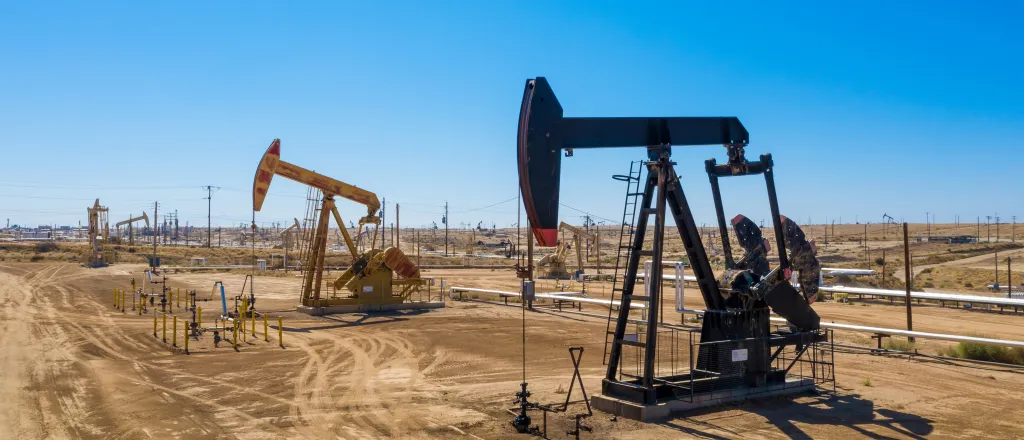
U.S. oil futures fall below $0 per barrel, West Texas crude drop to historic lows
(The Center Square) – U.S. oil prices crashed Monday to a record low with U.S. futures falling below $0 a barrel. The oil futures of West Texas Intermediate (WTI), the American benchmark of crude oil, plummeted to their lowest prices on record, and the largest single day drop of more than 90 percent.
U.S. oil futures are at their worst recorded level Monday since NYMEX opened trading in oil futures in 1983.
The most actively traded June WTI contract slid 18 percent to $20.43 a barrel and front-month May contracts plunged to about -$35 a barrel, the Wall Street Journal reports.
In May, West Texas International’s futures contract is also set to expire, which led to “frantic last minute trading,” Rystad Energy noted, resulting in "large price swings."
Brent, the global benchmark for oil trading, fell 3.9 percent to slightly below $27 a barrel Monday.
The shock to the oil industry comes roughly one week after an historic oil deal negotiated by President Donald Trump, who intervened in the Russian-Saudi Arabian oil war that brought the Texas oil industry to its knees.
Ali Velshi, MSNBC host, said that the futures now down by 92 percent were once trading at $62 in January.
Texas has the most to lose, and has reported significant losses in jobs and oil revenue, after its booming oil economy and leading state revenue driver was suddenly drawn to a halt by the Russian-Saudi oil war.
“The historic deal Trump helped engineer to curb global output isn’t enough to avert unprecedented pain for the domestic industry,” The Wall Street Journal’s Spencer Jakab said Monday, comparing the U.S. oil industry’s crash to a person having a heart attack.
Reeling from the oil war, two of Texas’ largest employers announced cuts in spending and staff.
Texas-based Exxon Mobil Corp. announced it was cutting capital spending by 30 percent in 2020 from $33 billion to $23 billion. It also announced it was decreasing cash operating expenses by 15 percent through "deliberate actions to increase efficiencies and reduce costs,” according to a report by the Houston Business Journal.
Halliburton, one of the world's largest oil field service companies, announced it was laying off more employees in Texas and Oklahoma as it adjusted to fluctuations in the oil and gas market.
The company announced it reduced its Executive Committee members’ salaries and was “making reductions in Oklahoma and locations in Texas as we adjust our workforce to reduced customer activity,” according to a statement. “This was a difficult decision, but is a necessary action as we work to successfully adapt to challenging market conditions."
In March, Halliburton furloughed 3,500 Houston employees for at least 60 days at its North Belt campus.
The oil war coupled with COVID-19 stay-at-home orders crippled the oil market by leading to far less demand for gas at a time when supply is at record levels. Excess supply of oil has also created a demand for places to store it.
According to GasBuddy.com, six states have surpassed their lowest average gas prices in over a decade; five of them are seeing the lowest prices since the early 2000s. In Wisconsin, gas prices haven’t been as low as they are in 6,621 days, the site reports. The average gas prices per gallon in Wisconsin is $1.30, lower than Texas’ roughly $1.49 a gallon.
“To have thought at the beginning of the year we’d be in the place we are would truly have been impossible, new and multi-year records continue to be written when it comes to gasoline prices,” Patrick De Haan, head of petroleum analysis for GasBuddy, said. “It’s staggering to know that in five of these six states we haven’t seen these gasoline prices in over 15 years, and for many of us, we watch from the living room window, adhering to the orders to stay at home. But there is strong potential that we will see gas prices this summer far lower than our previous expectations, and I’m hopeful by then we’re safely able to enjoy it.”
The voluntary agreement between OPEC+ and non-OPEC producers is expected to result in a 9.7 million BPD reduction in May and June. After June, the supply cut will drop to 8 million BPD for the remainder of the year and to 6 million BPD from January to April 2022.
"It hasn't taken long for the market to recognize that the OPEC+ deal will not, in its present form, be enough to balance oil markets," Stephen Innes, chief global markets strategist at AxiCorp, wrote in a research note published by CNN.
However, “many traders are betting that the coronavirus pandemic will run its course and the demand for oil will rise to $30/barrel,” the Wall Street Journal reports.
Daniel Yergin, oil historian and vice chairman at IHS Markit, said when the deal was reached that “Trump, who has been a critic of OPEC for years, is the one who put it together. Of all the deals he’s done in his life, this has to be the biggest. Not only was he a deal maker, but he was also something of a divorce mediator.”
“This agreement goes two years, so it’s also meant to manage the inventories downward over that period of time,” Yergin told CNBC. “What this has done is averted what really would have been a disaster for the oil industry and I think it does give some stabilization.”















